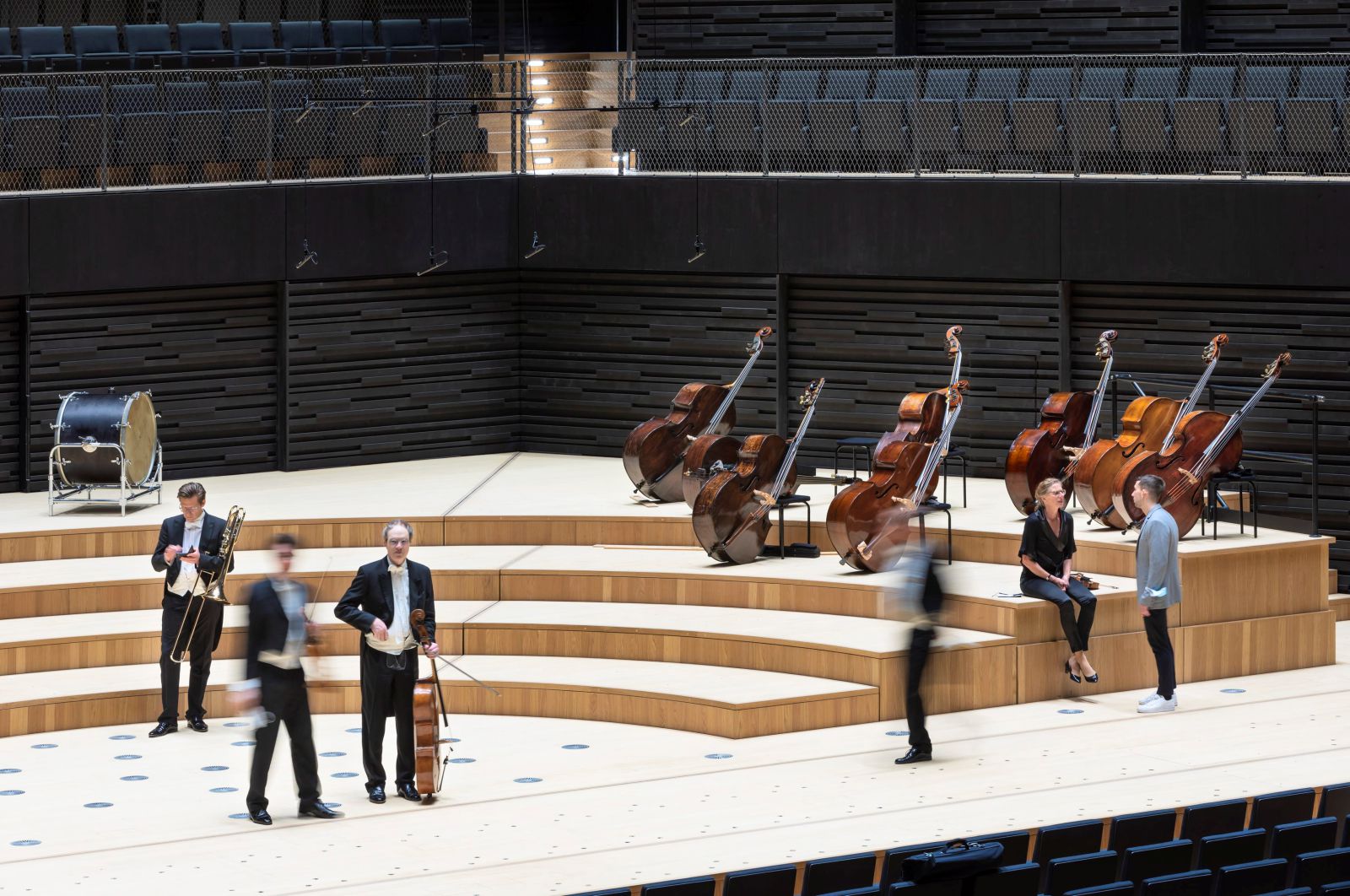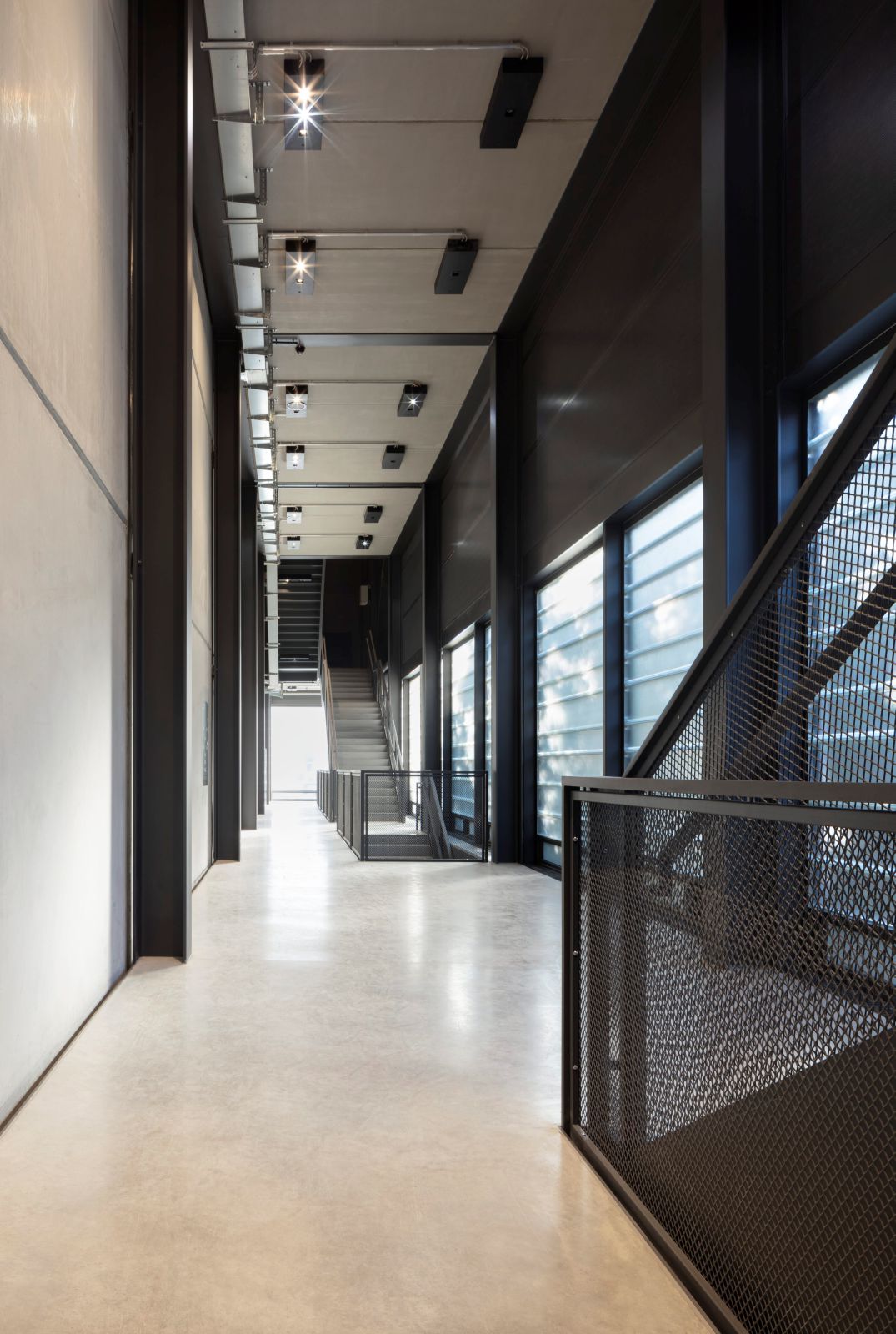After a construction period of just 18 months and within the budget of around 40 million Euro the Isarphilharmonie concert hall in timber module construction, with about 1,900 seats, has now been completed. In combination with the former transformer building (Hall E), which has been refurbished to listed building standard, it will become the focal point of Gasteig HP8, the venue for Europe’s largest cultural center during its general overhaul.
The architects von Gerkan, Marg and Partners (gmp) have succeeded — within a very tight time frame and budget — in creating an attractive venue with top-class acoustics of international standard that establishes the former Stadtwerke site in Sendling sustainably as a new, vibrant cultural quarter in Munich. The site at Hans-Preißinger-Straße 8 (“HP8”) is characterized by existing industrial, workshop and administration buildings that are now being used as artist studios and for other creative enterprises.
In this organically grown urban fabric, three further modular buildings are being built in addition to the Isarphilharmonie building. They will house institutions such as the Munich Adult Education Center and the Munich University of Music and Performing Arts, as well as a restaurant and other event venues. Their positioning in the urban design context is based on a design by gmp and emphasizes the former transformer building (Hall E) as a spatial and functional center of the quarter, which opens out towards the River Isar and the Flaucher park.
By utilizing Hall E for the HP8 center, a new public facility is being created at the banks of the River Isar, which will exist beyond the Gasteig use period. At the same time, the industrial character dating from 1929 will be preserved. The external appearance is dominated by concrete and red-brick facades, whereas the interior features a building-high atrium with top lighting and blue balcony railings fronting the surrounding tiers. In addition to the Isarphilharmonie foyer on the first floor, a branch of the Munich Public Library.
The library is equipped with an events venue, seminar and meeting rooms, and arts agency and eatery premises round off the room schedule, thereby creating a public space that will be popular and busy throughout the day. The existing building and the new modular building are separated by a glazed joint, which also contains the access steps to the concert hall. The new building is made up of two separate construction systems: the core of the building is the concert hall in modular timber construction.
In cooperation with structural engineers schlaich bergermann partner sbp, gmp developed the hall as a push-fit system of solid timber elements. To shorten the construction period, these elements were prefabricated while the outer steel structure was being erected; they were then assembled on site and faced with an industrial cladding system suitable for the time-limited service life. The use of single-skin floor and wall elements made it possible to further reduce the construction period.

Photo © HGEsch
The hall has been designed in the form of a classic “shoe box”, in which the orchestra takes its place on the front stage. The overall design principle of the interior was determined by the demanding acoustics requirements. With the overlapping arrangement of the prefabricated elements in saw-tooth formation and their rough surface, in combination with the geometry of the stage area, the rising parquet, and the seating, the sound-reflecting surfaces combine perfectly for the purpose of good acoustics.
The result is a very special sound experience; in addition, an intimate atmosphere is created by the dark coloring, whilst the light-colored wood of the stage attracts the attention of the audience. Surrounding the concert hall, between the hall itself and the facade, is an area with service functions that will also serve as a buffer between the exterior and the hall with its very demanding requirements in terms of climate and acoustics. The system makes it possible to replace the building facade at low cost, for example if it can be foreseen that the use of the concert hall is likely to continue beyond the planned period. Source by gmp.

Photo © HGEsch
- Location: München, Germany
- Architect: gmp
- Design: Meinhard von Gerkan and Stephan Schütz with Christian Hellmund
- Project Lead (Philharmonic Concert Hall): Annette Löber
- Project Lead (Hall E): Michael Scholz, Georg Folkmer (CL MAP)
- VgV Team: Christian Dorndorf, Thiago Henriques, Thilo Zehme, Anastasia Protsenko, Christoph Rohner
- Design Team: Anna von Aulock, Alessandro Dado, Christian Dorndorf, Jan-Peter Deml, Martin Muc, Christoph Rohner, Phillip Stillke, Udo Fricke (CL MAP), Claudia Hupfloher (CL MAP)
- Structural Engineering: schlaich bergermann partner sbp
- MEP HVAC: Hausladen Consulting Engineers
- ELT: Raible + Partner with Schmidt König Lighting Designers
- Room Acoustics, Concert Hall: Nagata Acoustics
- Stage Technology: Kunkel Consulting International
- Building Physics: Müller-BBM
- Fire Protection: imKONTEXT.berlin GmbH
- Landscape Design: realgrün Landschaftsarchitekten
- Client: Gasteig München GmbH
- GFA Philharmonic Concert Hall: 7,400 m2
- GFA Hall E: 8,440 m2
- Concert Hall Seats: 1,900
- Year: 2021
- Photographs: HGEsch Photography, Courtesy of gmp














